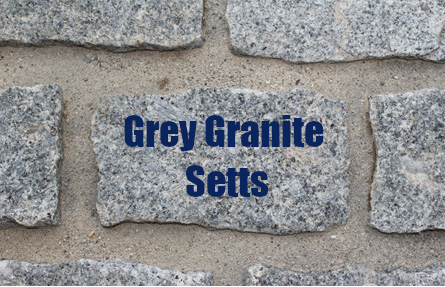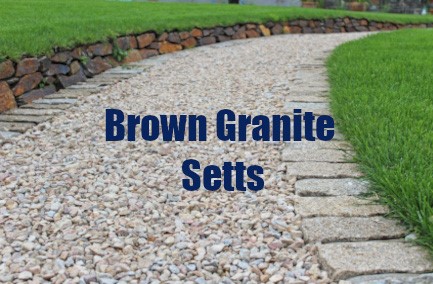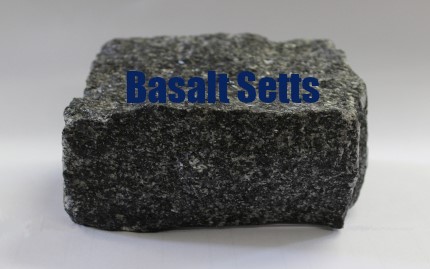Setts laying guide
Stone cobbles (also known as setts) are a hard wearing, attractive surface for a driveway or garden path. Here we have put together some simple advice for installing your own setts. You can shop Lantoom setts by clicking on the images below.
Digging Out
You should determine whether you are laying a flexible or rigid system. This will determine the depth of your digging out. Plan out your area and include a fall to ensure water can drain away. We would suggest something like 1:40 cross fall and 1:80 end fall drainage. Rigid or flexible? Many factors need to be considered such as vehicular traffic, type of setts to be used, the size of area and the frequency of use.
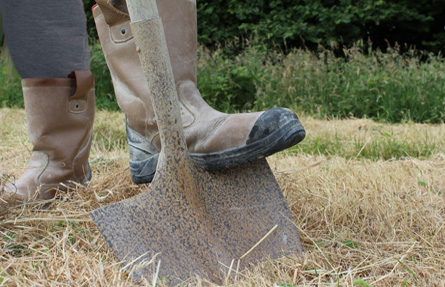
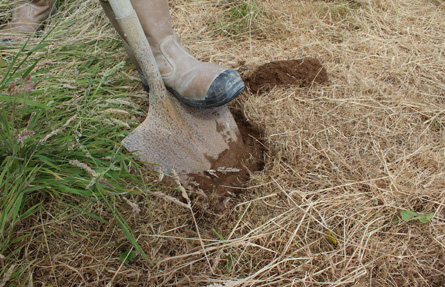
The rigid system consists of a compacted sub base over which an optional concrete base is laid, then the setts are laid and jointed in a sand cement mix. When digging out you will need to calculate the depth of the setts, sub base, optional concrete base layer, and bedding layer to ascertain the depth required. Remember that if you are laying setts up to a building then your finished top level needs to be at least 150mm below the DPC. (damp proof course).
Sub Base
The sub base is the layer that takes the load and gives your setts strength and durability. It isn't essential to include a sub base in every application but it's recommended in most cases. A sub base would usually be about 150mm of a Type 1 aggregate (Often also called 803). This is a 50mm-dust graded aggregate. It must be well compacted leaving little or no gaps for the bedding layer to run into. The sub base should be even in thickness and the finished sub base should reflect the final profile of the finished setts. (For more information on sub base please see sub base guide)
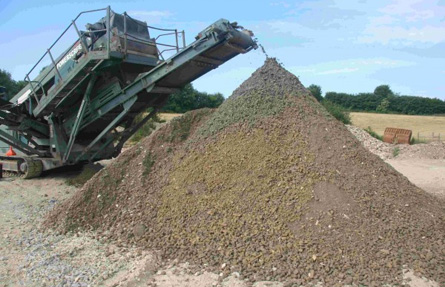

Base Layer
If laying a rigid system then a concrete base layer can be added over the sub base if required. This would normally be in the region of 50 to 150mm dependent on the application and requirements.
Bedding Layer
The bedding layer is the material that holds and supports the setts.The bedding material could be a coarse grit sand laid dry in a flexible system or the same coarse grit sand mixed with cement in a rigid construction. Do not use building sand - it's too soft. A 10:1 mix of sand/cement is around appropriate as this will stiffen the mix suitably. The thickness of the bedding layer will be determined by the variation of thickness of your setts. The bedding layer may need to "make up" the thickness of the shallower setts to ensure a level final result. You need to know how thick your thickest stones are to calculate how much bedding layer to allow. The minimum bedding aught to be at least 35mm.

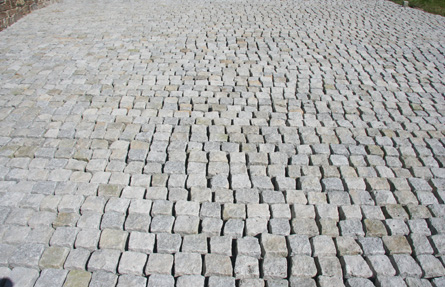
Laying Setts
The setts need to be set into the bedding layer by hand. Whether using a dry sand or a wet mortar mix the setts need positioning and individually setting to the required final level. Care should be taken to maintain the correct falls and/or cambers. The most common layout would be a coursed layout. This can be aided by a taught string line or a piece of wood. care should be taken with a coursed layout to select uniform width setts for each course, and to follow the lines accurately being sure to offset the perpendicular joints.
Jointing
For a flexible system you might use a jointing sand brushed in to the joints or with a rigid system brush in a dry mix of sand and cement. A 4:1 dry mixture is spread over the finished setts. Using a soft brush you sweep the mix into the joints. Each joint is then packed down with the edge of a trowel or similar implement to pack the dry mix into the joints. this process may need repeating several times to ensure a good solid joint. Obviously any residue on the surface needs to be swept clean to avoid any cement staining the stone. Alternative jointing methods include poured bitumen, wet mortar pointing, slurry poured grout to name a few.
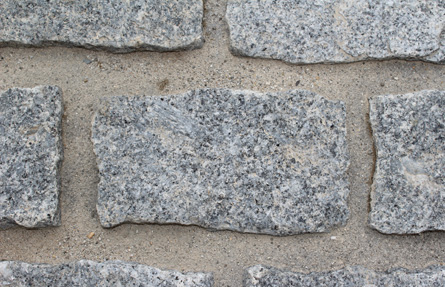
You may also want to check out pavingexpert.com, run by resident expert Tony McCormack, which contains lots of helpful articles on how to select and lay natural stone setts. 

